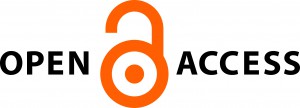This article was adapted with permission from “Public Access, Open Access: Outlining the Key Differences,” by Tierney Lyons and Donna S. Gibson, MLA Scholarly Communications Committee, MLA News, March 2013.
 For health care and academic administrators facing ongoing financial challenges, the open access (OA) initiative and mandates for free public access to scholarly literature will continue to gain importance. Librarians play a role in explaining the difference between public access and OA.
For health care and academic administrators facing ongoing financial challenges, the open access (OA) initiative and mandates for free public access to scholarly literature will continue to gain importance. Librarians play a role in explaining the difference between public access and OA.
Both public access mandates and the OA initiative shift costs away from the reader and libraries. They are differentiated, however, by their purpose and impact on the contributors. Whereas public access is a requirement placed on selected researchers, all scholars have the option to participate in OA publishing. An important distinction is copyright ownership. In public access, funding agencies make research results freely available, while still retaining traditional copyright restrictions. As with a published journal article, anyone can read the findings, but no one may redistribute the content without permission. In OA, the content is freely available and may be reused or even republished by others without having to gain permission. Many OA authors choose to protect their content by applying a Creative Commons or similar license to their work.
Public access stems from a mandate for authors outlined by specific funding agencies to enforce free public access to the research they sponsor. Public access policies exist in only two parts of the government: the National Institutes of Health (NIH), which requires deposit into PMC (formerly PubMed Central), and the Department of Education, which requires deposit into the ERIC database. There are also private funding agencies that require public access, including the Wellcome Trust and the Howard Hughes Medical Institute.
The OA publishing model is typically divided into two delivery methods, “green” and “gold.” Green emphasizes publicly-viewable repositories of peer-reviewed content, whereas gold focuses on subscription-free publishers allowing anyone to read their refereed works. A third method, “PeerJ,” has recently appeared on the scene, reinforcing the sharing of research among scientists. PeerJ provides authors with a venue to publish without any article processing fees. The editors have established this new model wherein researchers pay a membership fee to join and then are granted a lifetime right to publish articles through PeerJ. By joining, authors agree to contribute to the community by performing at least one review of others’ work every twelve months.
Moving forward, OA distribution and publishing models will push the scholarly community toward novel and innovative ways to share research output. Incorporating networking and collaborative features enhances researchers’ options for presenting their work and encourages larger-scale peer communication and cross-disciplinary innovation. Such dissemination accelerates scholarly communication by ensuring availability of federal research results in a free, interoperable, and preserved repository.
Update: The Office of Science and Technology Policy (OSTP) released a memorandum on February 22 directing each federal agency with over $100 million in annual conduct of research and development expenditures to develop a plan to support increased public access to the results of research funded by the federal government. Each agency is called to submit its draft plan to OSTP within six months. The plan sets the framework of a twelve-month post-publication embargo period as a guideline for making research papers publicly available.